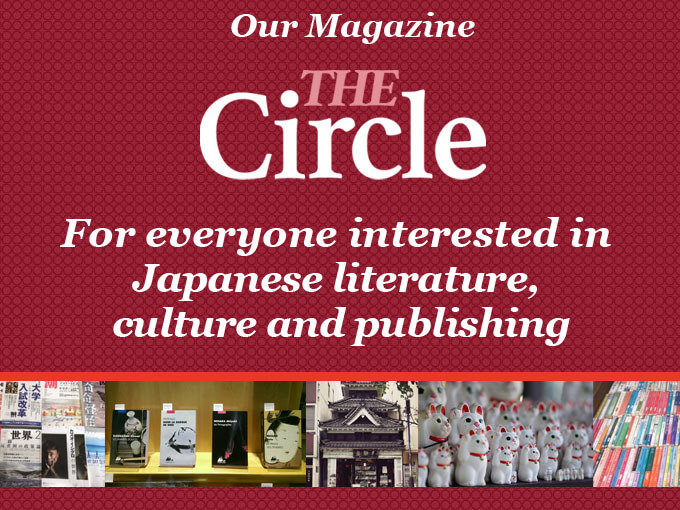Ieyasu Tokugawa (1543-1616) who founded a military state and a dynasty of shoguns that ruled for 265 years during what is known as Japan’s Tokugawa or Edo period (1603-1868), placed significant importance on literature, reading, books and publishing.
Tokugawa sponsored the publication of books including Confucian classics and Buddhist texts and believed that encouraging the production and distribution of books was an essential part of good governance.
Tokugawa famously said: ‘when people forget the moral requisites of humanity, order is lost, government declines, and there is no peace. The only way to deliver those morals to the people is through books. The first step of good government is to print books for a wide audience’. It’s interesting to note, too, that the Tokugawa period was the most stable and peaceful period in Japanese history.
The books published under his leadership were generally practical and educational and not just theoretical and abstract texts. After he consolidated his power, books were gathered from across Japan and collected at Edo Castle. Over time, this lead to the building of an impressive collection of more than one hundred thousand books, most of which are now part of Japan’s National Archives and the Imperial library.
In 1593 the first ‘Japanese book’ was printed using movable type, a decade before Tokugawa was appointed as Shogun. After retiring as Shogun, Tokugawa commissioned a large-scale publishing project that required the creation of copper metal type for more than a hundred thousand Chinese character types (logographic letters known as Kanji used in Japanese writing).
The books printed with this type are known as the Suruga Editions and played an important role in the development of publishing and printing in Japan.
Japan’s first commercial publishing emerged in Kyoto during this period and spread to Osaka and Edo, now Tokyo. The military class learnt to read and even produce literature. They were, in fact, encouraged to do so.
Some Samurai, mostly from the lower ranks, played an active and important role in the development of popular fiction. This included authors like Monzaemon Chikamatsu (1653-1724) and Jippensha Ikku (1765-1831).
Literacy rates among men and women increased, becoming the highest in the world. However, there was only a limited amount of publishing actually conducted by the Shogunate authorities (the government) during this period. Much of it was outsourced to commercial publishers who would also have published calendars, maps and directories.
Commercial publishers dominated the industry not just through contract publishing for the authorities and the selling of books but also by commissioning the engraving of print blocks, and haiku books, for example.
This helped commercial publishing grow and flourish. By 1693, according to historians, the number of commercial publishers in Japan had increased to around 400 publishers with 7,800 titles published in that year alone. There are currently around 3,500 publishers in Japan publishing more than 70,000 books per year.
Just as is the case today, only a small number of commercial publishers dominated the industry back in the Edo Period, with half of all the books being published by less than 10 percent of the publishers.
Analysis indicates that the number of books available in Japan during the latter half of the 17thcentury when authors like Chikamatsu, who is considered by some to be Japan’s Shakespeare, were in their writing prime were double the number from when these authors were learning to read.
Books, reading and writing had already enjoyed a long history in Japan, but the importance that Tokugawa placed on books cannot be overstated. Indeed, many, including Tsunenari Tokugawa, the eighteenth head of the Tokugawa family, believed that this was a key factor in the longevity of the state and system of government that Tokugawa initiated.
Tsunenari Tokugawa writes in his book, The Edo Inheritance, published in English translation in 2009: ‘Ieyasu, while no liberal, asserted that the publication of classics and dissemination of knowledge are the heart of good government and followed up this assertion with action four centuries ago. I think this alone makes him a great historical figure.’
Tokugawa’s actions helped create so-called ‘Pax Tokugawa’ as well as a new generation of samurai authors, a book loving public and a vibrant reading culture with what some academics have described as ‘epic levels of book consumption’.
Chikamatsu, author of Love Suicides at Somezaki and Matsuo Basho (1644-1694), often said to be the greatest master of haiku, were both born into samurai families and grew up as samurai before switching to the pen, or more accurately the ink brush – something the first Tokugawa Shogun would have been delighted by.
The Shogun’s respect for publishing was a key factor that led to the Tokugawa-state lasting 265 years
[UPDATED: 6-24-2020]
© Red Circle Authors Limited
The Shogun’s respect for publishing was a key factor that led to the Tokugawa-state lasting 265 years
Posted by

